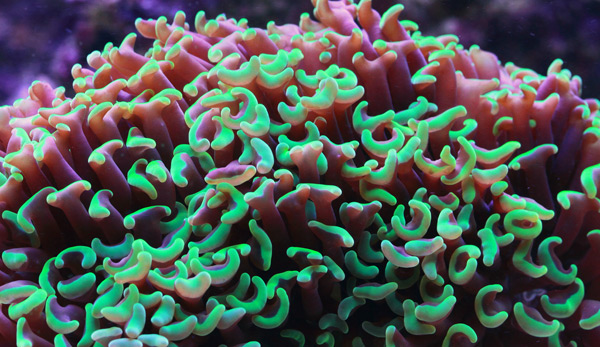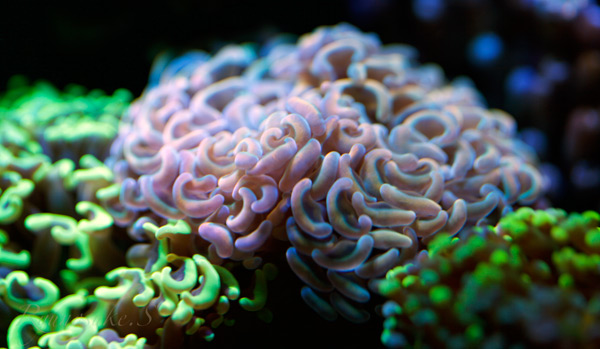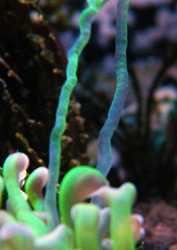Several of the so-called large-polyp stony (LPS) corals offer the advantages of being very hardy, adaptable, and beautiful and, thus, make excellent reef aquarium candidates, even for relatively new reefkeepers. The hammer coral (Euphyllia ancora), however, I would characterize slightly differently. There’s no question this coral is gorgeous, but I would rate it as rather less forgiving than, say, Trachyphyllia geoffroyi. Still, if its care requirements and aggressive nature are given proper attention, this coral can be a showpiece reef aquarium resident.
Physical traits
E. ancora has long, tubular tentacles with tips that resemble, as you might guess, the head of a hammer or an anchor. Most specimens I’ve come across have had brownish to grayish tentacles with the tips being some shade of green, gold, or cream, but the color can be quite variable. Colonies of this coral can get quite large—upwards of 3 feet across—which must be taken into consideration when determining tank size, placement, etc. Note that there is also a very similar species, Euphyllia paraancora, that has a branching growth habit.

Feeding
The hammer coral is zooxanthellate, meaning it derives much of the nutrition it needs from the symbiotic zooxanthellae harbored within its tissues, provided proper lighting is supplied. It does, however, benefit from occasional direct feedings (gently delivered to the tentacles via, for example, turkey baster or pipette) with small meaty foods, such as mysids, enriched brine shrimp, plankton, or finely chopped fish, mollusk, or crustacean flesh. Once-weekly feedings are sufficient.
Housing, lighting, and current
Given the significant growth potential of E. ancora, it shouldn’t be shoehorned into a small aquarium for reasons of appropriate spacing between specimens as well as water quality. Not every captive colony is going to come close to reaching the maximum size listed above, but even a third of that potential is considerable. Make sure the length and width of the tank will be more than adequate to accommodate future growth.

Both lighting and water movement should be moderate, and make sure the latter is turbulent, not blasting and linear. You want just enough current to keep the tentacles jiggling and prevent detritus from settling, but not so much that the coral’s tissues abrade against its skeleton.
Compatibility

It’s important to be aware that E. ancora is quite aggressive as corals go. At night, this species extends long, nematocyst-laden sweeper tentacles (reaching upwards of about 6 inches) that pack a powerful sting. So, it’s critical to allow ample space or provide structure between a hammer coral and any neighboring sessile invertebrates (factoring in both the potential colony size as well as the reach of the sweeper tentacles) lest they be damaged or killed.



